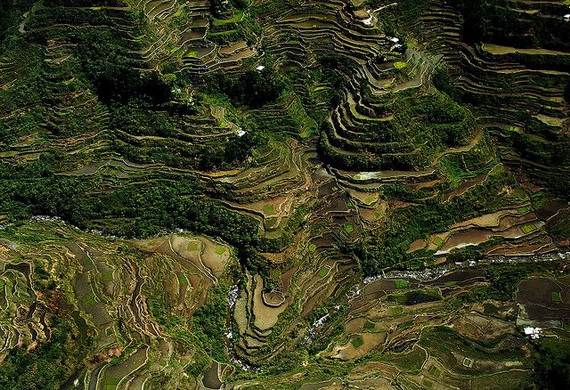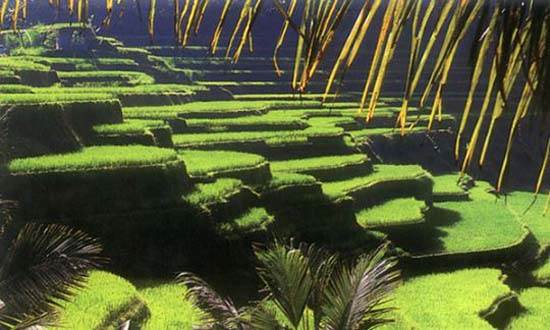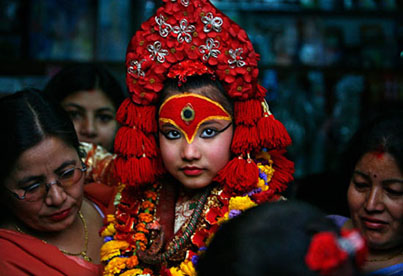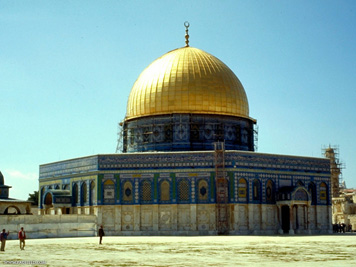Bali Island Of The Gods Indonesia… Bali, an island in Indonesia that is located at the extreme west of Lesser Sunda Island, between Java and Lombok. One of the most popular tourist destinations in the world. Still many people do not know the uniqueness of Balinese culture, their relation to the spiritual relationship between human and God, and their environment. And it is the Balinese civilization what makes the island different from other destinations.
Bali is one of more than 17,000 islands in the Indonesian archipelago. Bali, renowned as “The Island of the Gods,” is not just a tropical haven with beautiful beaches and lush landscapes, it’s a land rich in cultural heritage, and at the heart of this cultural tapestry are its temples. There are over 20,000 temples in Bali each one more beautiful than the other, because of the great number of wonderful Hindu temples there are in the Island. It says that Bali has more temples than houses. Oldest temples of Bali were constructed from 913 AD such as Pura Ulun Danu Batur, Pura Kehen, Gunungkawi, amongst other.
There are around 50 largest temples and only some of them are considered the most important of Bali and for traveling tourists.
Bali the Island of the Gods
Why is Bali Called the Island of the Gods? Bali is home to a myriad of temples, both large and small, dedicated to various deities. Almost an inch of land in Bali, there is a temple which is the seat of the gods. These temples are not just architectural wonders but sacred spaces, every temple is believed to be the residence of the gods, where locals and visitors alike can connect with the divine.
Cultural Significance of Bali Temples
Bali is more than just a tropical beach destination; it is a land blessed with diverse natural wonders. From sandy beaches and turquoise waters to lush jungles, scenic rice terraces, unique wildlife, and towering volcanoes, the island offers a rich tapestry of landscapes. Embracing spirituality and culture, Bali is often referred to as ‘The Island of the Gods.’ The temples in Bali are not mere structures; they serve as living symbols of the island’s spirituality, reflecting its unique blend of Hinduism.
These Balinese Hindu temples go beyond being places of worship; they embody art, history, and spirituality. Interwoven seamlessly into daily life, the island’s spirituality is evident in temples, palaces, festivals, ceremonies, art, drama, music, dance, and the warm hospitality of the Balinese people. Appreciating the true essence of these temples requires an understanding of this cultural context.
For culture enthusiasts, Bali offers a wealth of historical sites, cultural treasures, and divine temples, drawing them away from the beach resorts. Those seeking a more active and adventurous holiday will also find ample opportunities to satisfy their interests in Bali.
PLACES TO VISIT IN BALI
Join us on a journey as we delve into the most iconic temples in Bali, challenging to find another island that rivals Bali in its abundance of offerings. Here are 10 must-see attractions and places to visit in Bali that promise a unique and unforgettable experience.
1-Tanah Lot Temple/Pura Tanah Lot
Tanah Lot Temple is an absolute must-see for all travelers, as it is among one of the seven sea temples along the coast. The temple is suspended on a huge black volcanic rock in middle of the sea, which has been shaped continuously over the years by the ocean tide. Established in the 16th century. The unique location not only offers stunning views but also a sense of spiritual harmony that has turned Tanah Lot Temple into a religious and cultural icon. The temple has only one tower and it is decorated by foliage spilling over the cliffs. It is the home of a pilgrimage temple. You can walk to the temple only when the tide is low but not allowed inside the temple buildings …. Mostly from Mid-January to Mid-April/Mid-September to Mid-December, would be the best time to visit.
2-Besakih Temple / Pura Besakih:
It is the most important and holiest temple of Agama Hindu Dharma in Bali. It is also the biggest which is why some refer to it as the ‘Great Temple.” It was originally dedicated to the god Gunung Agun (the mountain) since prehistorical times. The temple dates to the fourteenth century, located in the eastern part of the island. It was built on the south slopes of Mount Agung, the principal volcano of Bali and it is the highest point in Bali at 9,944 feet.. The temple is actually a complex made up of twenty-two temples that sit on parallel ridges with entrances facing all four directions. An important feature of the temple is the great number of Merus (wooden buildings with pagodas as roofs). Now this temple is considered the “Mother Temple” of Bali and is very respected by all Bali citizens.
Today, the temples maintain their significance in the religious practices of the Balinese people, remaining among the top attractions in Bali. Hosting more than 70 religious ceremonies annually, Pura Besakih draws numerous visitors. Despite the influx of tourists, the temple grounds exude an aura of peace and serenity.
Within the temple complex, numerous beautiful carvings, statues, and artwork abound, showcasing Bali’s cultural richness. With Mount Agung as a breathtaking backdrop, the temple offers captivating views of the surrounding hills, rice paddies, and the stunning views of the countryside.
3- Pura Kehen Temple/ Pura Kehen:
One of the oldest temples of Bali, harmonious blend of Balinese and Hindu architectural styles. According to the three inscriptions inside the Temple, it is estimated that the Kehen Temple was established in the 800s to the early 1000s. The temple has some ancient manuscripts made of bronze. This is the second largest temple in Bali. This temple has 8 terraces, and it is built on the southern slope of the hill. Kohen means household or fireplace and symbolizes the fire god, Brahman who protects the temple. One of the most representative elements of the temple is old Banyan tree that is in the second courtyard.
4- Ulun Danu Batur Temple /Pura Ulun Danu Batur (Goddess of lakes and rivers):
It is the second most important temple of Bali after Pura Besakih nestled in Kintamani. The temple was rebuilt in 1926 and became a UNESCO World Heritage Site in 2012. The temple is situated in a beautiful location at the Batur Lake at the foot of the Gunung Batur Volcano. The original temple was built in the XI century: dedicated to the goddess of lake Batur and Vishnu. The temple has seven traditional statues, each representing a manifestation of God. Unfortunately, it was destroyed by a volcanic eruption in 1926. The villagers moved to the highest and oldest rim of the caldera where they rebuilt their village and the temple. Ulun Danu Batur should not be confused with Ulun Danu Beratan, the famous Temple of the Lake in Bedugul.
5- Uluwatu Temple /Pura Uluwatu:
Is one of the most ancient of Bali. The temple is constructed at the top of a cliff 90 meters over the sea. It was built in the 11th century. If you’re embarking on a cultural journey of the region, Temple is, Bali’s crown jewel where nature’s majesty and cultural mystique come together in an awe-inspiring symphony providing a true slice of Balinese culture.
The best time to go to Uluwatu Temple is in the evening to watch the sunset over the water. If you are lucky to Join the famous Kecak dance performance and music drama telling stories of the past at sunset are held every evening at Uluwatu Temple. The sun sets beyond the open-air theatre, offering Bali’s most iconic performances of a traditional fire dance that tells the story of the Hindu epic… Prince Rama as he searches for his wife Sita.
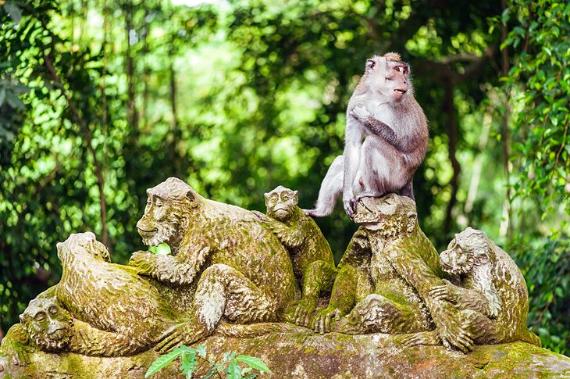

6-Ubud Monkey Forest Sanctuary
Another place where you will find not just a temple, but a haven for playful monkeys in Bali is at the Ubud Monkey Forest. Located inland in the popular tourist area of the village of Padangtegal in Ubud. this forest sanctuary is the natural habitat to more than 750 Balinese long-tailed monkeys surrounded by lush jungle and ancient temples.
There also are three temples within its boundaries, namely the Dalem Agung Padangtegal Temple, The Prajapati Temple, and the Holy Spring Temple, that date back to the 14th century. All the temples are constructed with amazing sculptures and carvings of dragons and monkeys, covered in moss, creating an ancient and mysterious atmosphere.
There are around 115 species of trees combined with monkeys. The forest has a lot of spiritual, economic, and cultural importance for the villagers of Padangtegal. It spreads over a vast area of 12.5 hectares of land, making it a great source for fresh air.

7-Tirta Empul Temple
Pura Tirta Empul, commonly known as the Water Temple, stands as one of Bali’s oldest and most sacred sites. Constructed in the year 962 AD, this spiritual haven boasts 30 springs and two revered bathing pools. Visitors have the opportunity to immerse themselves in the profound spiritual ambiance through the regular purification ceremonies conducted at this holy location.
The sacred springs are believed to carry the essence of good fortune and offer a source of rejuvenation for both the body and soul. Pilgrims frequent this site to engage in physical cleansing through ritual baths and seek spiritual purification through prayers for well-being and prosperity. Beyond the therapeutic qualities of the pool waters, guests are drawn to admire the temple’s stunning architecture and many carved statues adorning both inside and outside the grounds.
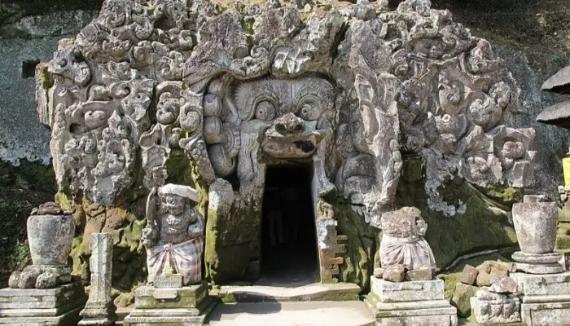
8-Goa Gajah Temple/“Elephant Cave,”
Goa Gajah Temple, commonly referred to as the “Elephant Cave,” because of its close proximity to the Elephant River. This ancient archaeological sanctuary features frightening faces carved into the stone, that are said to ward off evil spirits. Surrounded by gardens and natural rock formations, Goa Gajah dates back approximately 1,000 years, exuding a potent energy that fosters a connection to nature.
Upon passing through the imposing face with a wide-open mouth and entering a cave, visitors encounter an ancient meditative space and a worshipping area where Hindus conducted rituals, including chanting mantras and healing prayers. Following a stone elephant sculpture leads to an inner chamber adorned with delicate non-Hindu artworks, making these relics unique and exceptional, not found elsewhere on the island. Despite being listed as a tentative UNESCO World Heritage site in 1995 for 20 years, Goa Gajah was removed from consideration in 2015.

9-Taman Ayun Temple
Pura Taman Ayun stands as one of Bali’s most frequented temples, drawing both local and international tourists. Recognized as a UNESCO World Cultural Tourism site in Mengwi as it holds a very strong and sophisticated architectural design. The temple is easily identified by its towering gates, pagodas, and courtyards that soar up to four stories high. Sprawling and intricate, it houses detailed carvings, numerous shrines, and lush gardens, showcasing itself as one of Indonesia’s most remarkable architectural accomplishments. The temple complex comprises a central courtyard, two prominent meru towers, and seven terraced shrines. Originally constructed in the 17th century, it served as the family temple of Mengwi Empire’s first Indonesian king, Tjokerda Sakti Blambangan, and was exclusively accessible to royalty.

10- Saraswati Temple
Nestled in the heart of Ubud lies the renowned Saraswati Temple, also known as the Ubud Water Palace. This ancient Hindu temple was constructed in 1951 by one of the Ubud princes to honor Saraswati, the divine consort of Brahma, the four-faced creator deity in Hindu mythology. Saraswati, originally embodying the sacred Saraswati River in India, has evolved over time to symbolize the patroness of knowledge, literature, and the arts, representing the creative essence that flows within the human heart and soul.
The Saraswati Temple is celebrated for its captivating lotus pond, featuring a large whitewashed water garden adorned with exquisite Balinese carvings. Within the main shrine, a golden effigy of Saraswati resides, surrounded by devotees engaging in ceremonial rituals. The temple’s courtyards are filled with the melodic sounds of wild birds and soft instrumental music, creating an enchanting and ethereal atmosphere.
Rice Terraces
The Rice Terraces in Bali are stunning landscapes of stepped, lush green fields used for cultivating rice. These terraces are not only functional for agriculture but also form intricate patterns against the backdrop of Bali’s natural beauty. The traditional Subak irrigation system is utilized to manage water flow for rice cultivation, showcasing the harmonious relationship between nature and human ingenuity. The Tegallalang Rice Terraces are particularly famous, attracting visitors with their picturesque views and cultural significance.
Bali is full of fun, enjoyment and is famous for its mysterious past. Was discovered by an international community of traveling surfers and hippies. The first sets of people to inhabit Bali were Austronesia’s in 200 B.C. These had initially migrated from Taiwan. The Bali culture had lots of influence of India i.e., the Hindus and Chinese culture. Most of the people here are Muslims and a minority of the population is Christian, Hindus and Buddhist.
Bali is an “Ultimate Island” due to its wide variety of attractions, the physical beauty of the island, and the year-round pleasant climate which make Bali a place regarded by many traveling tourists. Therefore, the countless and amazing temples of Bali are considered all together, one of the great man-made wonders.
Beside Bali’s wonderful Hindu temples, Bali is varied by landscape of hills and mountains, rugged coastlines and sandy beaches, lush rice terraces are known for its beautiful rice terraces. It is full also with temples, arts, dance, painting, leather and music and barren volcanic hillsides, towering volcanoes, verdant tropical forests full of monkeys, dramatic steep sided ravines, startling crater lakes, holy caves, fast-flowing rivers, and paddy fields that seem to stretch on forever. The 80% of tourism in Indonesia is poured on Bali.
Frequently Asked Questions
What is the holy site in Bali?
The holy site in Bali is Besakih Temple, also known as Mother Temple.
Where is the most spiritual place in Bali?
The most spiritual place in Bali is Ubud, known for its lush landscapes, ancient temples, and a vibrant arts scene, fostering a deep connection to Balinese culture and spirituality.
Where is the most popular spot in Bali?
The most popular spot in Bali is often considered to be Kuta Beach, known for its vibrant nightlife, surfing opportunities, and bustling atmosphere.
What is the best time to visit Bali’s temples?
Exploring temples is best during the dry season from April to September when the skies are clear, and temperatures are comfortable. Optimal times for visits are early mornings or late afternoons, offering a serene atmosphere and beautiful lighting for a memorable experience.
What are some lesser-known temples worth exploring in Bali?
Lesser-known temples like Taman Saraswati and Pura Luhur Batukaru offer a distinctive experiences away from the usual tourist crowds.
What makes Bali’s temples unique?
Bali’s temples are unique due to their intricate architecture, rich cultural significance, and the island’s unique blend of Hinduism with indigenous Balinese beliefs. The temples often feature stunning carvings, vibrant ceremonies, and picturesque locations, making them integral to Bali’s spiritual and social fabric.
Rice Terraces
































